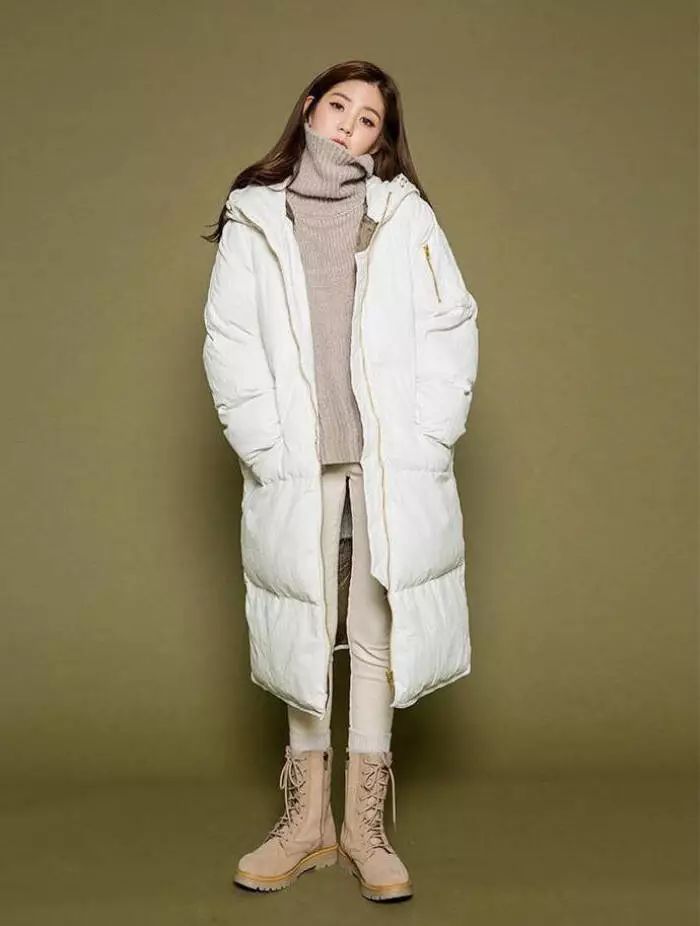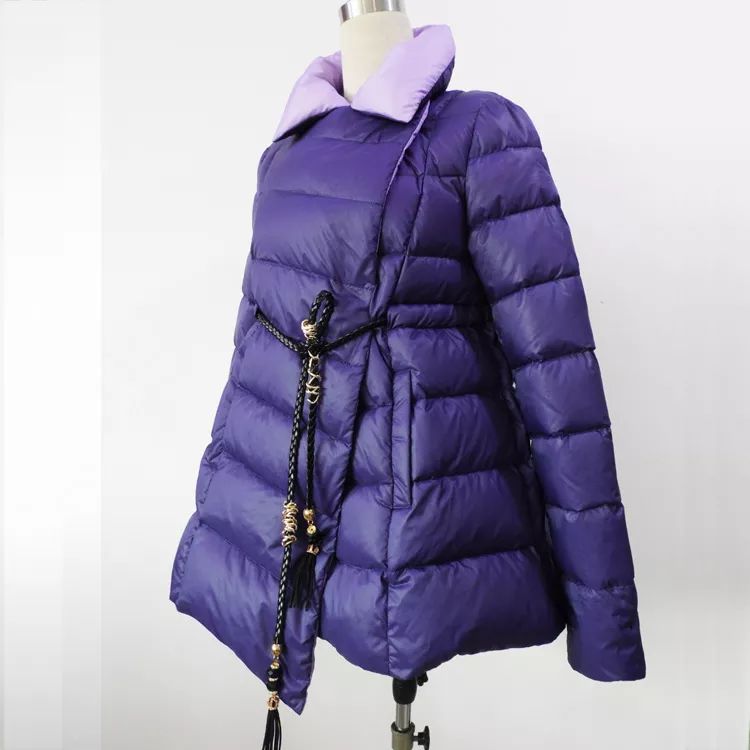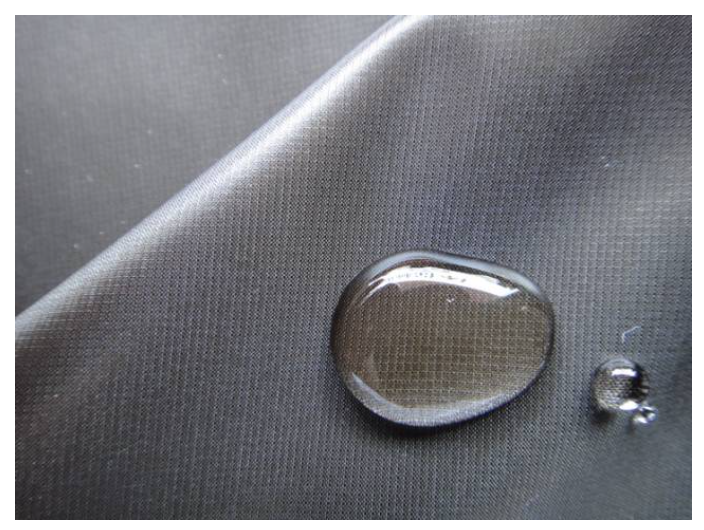Introduction to hot-sellingdown jacket fabrics
Introduction to hot-selling down jacket fabric types

1. High-density nylon spinning: such as 300T and 310T matte nylon spinning, the raw material specification is 40D*40D, mainly twill type, the style is mostly diamond grid, and the style is relatively single. In the post-finishing, more three-proof treatment is also done. The colors are mainly light colors and the width is 160CM. The reference price of the down jacket fabric wholesale market is between 5.80-6.30 yuan/meter.
2. High-density pongee: mainly 290T, 300T matt pongee, raw material specification 50D*50D DTY, mainly plain weave and twill weave; demand is diverse, including plaid, horizontal stripe, Peak Nest, Gypsophila, etc. There are also various post-finishing processes, such as waterproof, anti-fouling, anti-ultraviolet, high-density, etc. The door width is 160CM, and the reference price in the wholesale market of this down jacket fabric is between 3.5-4.1 yuan/meter.
3. High-density polyester taffeta: raw material 50D*50D FDY, mainly 300T, mostly denim weave. Ultra-fine denier polyester taffeta fabric is a new variety appearing in the Shengze market this autumn. It is mainly combined with finishing, lamination and coating for deep processing. Sales in the market have been active recently, with constant highlights. At the same time, the wholesale market price of this down jacket fabric is also around 8.10 yuan/meter.
Introduction to the characteristics of hot-selling down jacket fabrics

First, high density. We can see that whether it is nylon, pongee or polyester taffeta, they all emphasize high density. Analyze the reasons: on the one hand, it is suitable for heat preservation; on the other hand, it facilitates subsequent finishing and deep processing.
The second is that the color is light and bright. According to reports from market operators, down jacket manufacturers prefer light colors this year, with milky white, pink, light green and other colors more prominent. Analyzing the reasons, the main reason is that the times have progressed and people’s outlook on life has also changed accordingly. These colors will appear vibrant and charming regardless of age or age when wearing ready-made clothes.
The third is functionalization. In addition to the conventional waterproof, oil-proof, and UV-resistant treatments, the above-mentioned hot-selling down jacket fabrics also have anti-static, moisture-absorbing and sweat-wicking functions. Together with environmentally friendly printing and dyeing, they are very comfortable to wear and have better functions.
The materials of down jackets are mainly down and coated fabrics

①Down: Xiaoyu A mixture of slices and velvet (also called velvet). The former is called feathers, and the latter is called velvet. The feathers of ducks and geese are mostly used, and after selection and washing, the small pinnae and down are separated and used as wadding for down jackets. There are two types of down: gray and white, the white one is better. The quality of down jackets is related to the amount of down filling and down content. Down filling refers to the weight of down in a down jacket, expressed in grams. Small down filling means poor warmth retention; down content refers to the down content in the down, expressed as a percentage. A high down content indicates good quality.
② The coated fabrics are made of silk, cotton, cotton-polyester and other fabrics with high warp and weft yarn density. They are rolled and pressed to reduce the gaps between the warp and weft yarns, and then coated with polymer slurry to make them consistent with the coating. The fabric forms a cross-linked transparent film covering layer to close the warp and weft gaps of the fabric. Some add fluorophosphorus resin or silicone waterproofing agent into the coating slurry to make the fabric anti-dendruff and anti-water seepage.
Basic requirements for common down jacket fabrics
(1) Windproof and breathable: Most down jackets have a certain degree of windproofness. Breathability is an important aspect when evaluating the comfort of winter clothing. Caizhi Clothing Technology Tens of Thousand G Clothing Tutorial WeChat: 975851096
(2) Anti-down: There are three ways to enhance the down-proof properties of down fabrics. One is to cover or coat the base fabric, and pass the film or The coating is used to prevent lint leakage. Of course, the first prerequisite is that it is breathable and will not affect the lightness and softness of the fabric. The second is to process high-density fabrics through post-processing to improve the anti-velvet properties of the fabric itself. The third is to add a layer of anti-flannel cloth to the inner layer of the down fabric. The quality of the anti-flannel cloth will directly affect the quality of the entire garment.
(3) Thin and soft: In today’s era of lightweight equipment, the lightness of the fabric of a down jacket will directly affect the overall weight of a down jacket, and soft fabrics, for down jackets that are already bulky, It will enhance the comfort of elderly people wearing down jackets. On the other hand, thin and soft fabrics help to better utilize the fluffiness of down, so the warmth retention will be higher.
Fabric design of winter down jackets for the elderly
1. Down design in down jackets
Down jackets are light, soft and warm, and these characteristics are largely It depends on the content and quality of down in the down jacket.
Based on the average winter temperature in Xi’an in recent years (generally around minus 10 degrees) and the physiological characteristics of the elderly who are not cold-tolerant, we choose: white with 80% down content and 180g~250g down filling. Duck down.
2. Fabric design
Using pure cotton PU coated fabric with TTU isolation layer (the fiber yarn density of the pure cotton base fabric is 200T, plain weave). Pure cotton PU coated fabric is as smooth and delicate as silk, with a tight hand feel. The pure cotton material is easy to absorb sweat and has good breathability, and the PU coating makes it easy to wear.�Wrinkle-resistant, has excellent elastic recovery and effectively prevents lint leakage. The biggest features of TTU isolation layer are heat absorption, breathability and moisture conduction. Although the fabric is thin, the snow-white down inside is not visible at all. After the rolling and weaving process, the fiber filaments of the TTU isolation layer are extremely tightly combined. At the same time, the porous structure of the fiber can effectively conduct moisture and breath to the inside and absorb sunlight to the outside. Therefore, it has extraordinary windproof, warm and breathable properties.
3. Lining design
Using polyester taffeta woven from fine-denier polyester silk imitation silk. This kind of polyester taffeta is a thin, all-polyester fabric that is woven with fine-denier polyester filament (increasing the fabric’s hygroscopicity and breathability) to create a fabric with a silk-like appearance. It has a bright color and a smooth feel. The warp and weft of the fabric are made of semi-dull (to make the fabric softer, increase the dyeability and drape) fine-denier polyester filament FDY50D/48F (meaning that this 75-denier fully stretched fine-denier polyester filament is composed of 48 monofilaments ) as raw material, using plain weave interwoven on a water-jet loom, interwoven according to the specifications of 290T (to prevent down leakage), the gray fabric is relaxed, desized, alkali reduced (to increase the breathability of the fabric), Through processes such as dyeing, soft shaping and calendering, the fabric has the characteristics of uniform texture, thin and breathable, soft and delicate surface, stiff and easy to iron, and anti-velvet leakage. It is an ideal lining material for making winter down jackets.






